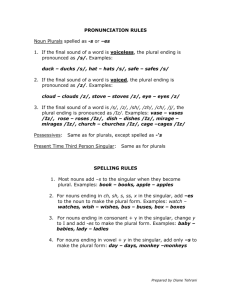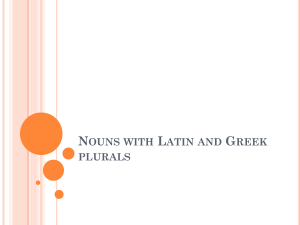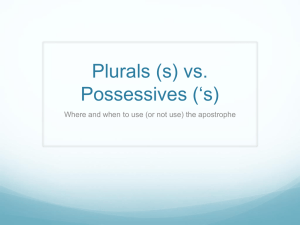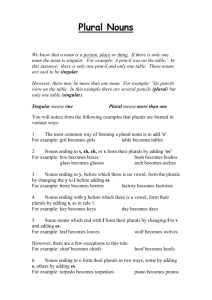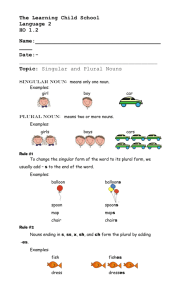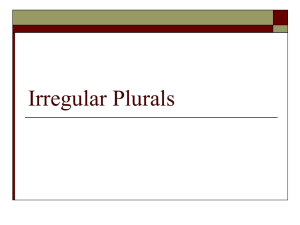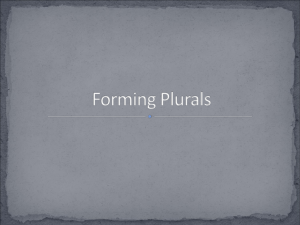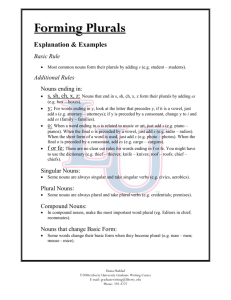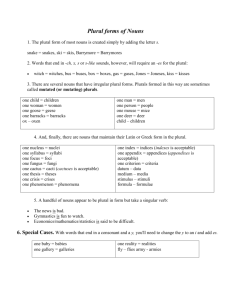Forming Plurals
advertisement
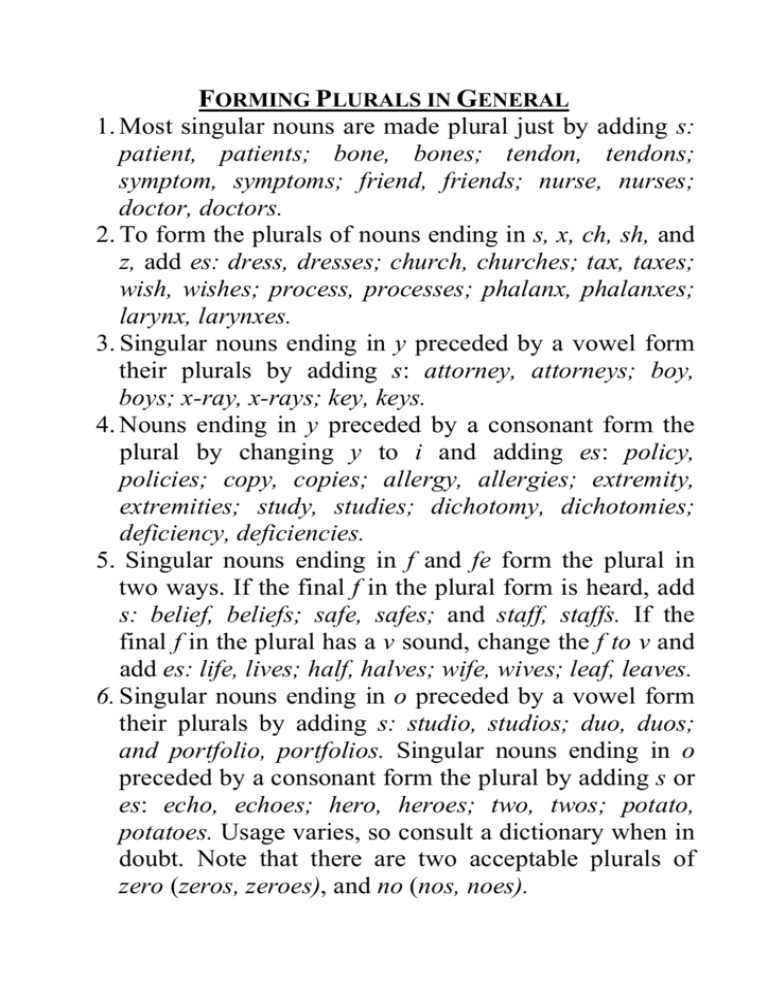
FORMING PLURALS IN GENERAL 1. Most singular nouns are made plural just by adding s: patient, patients; bone, bones; tendon, tendons; symptom, symptoms; friend, friends; nurse, nurses; doctor, doctors. 2. To form the plurals of nouns ending in s, x, ch, sh, and z, add es: dress, dresses; church, churches; tax, taxes; wish, wishes; process, processes; phalanx, phalanxes; larynx, larynxes. 3. Singular nouns ending in y preceded by a vowel form their plurals by adding s: attorney, attorneys; boy, boys; x-ray, x-rays; key, keys. 4. Nouns ending in y preceded by a consonant form the plural by changing y to i and adding es: policy, policies; copy, copies; allergy, allergies; extremity, extremities; study, studies; dichotomy, dichotomies; deficiency, deficiencies. 5. Singular nouns ending in f and fe form the plural in two ways. If the final f in the plural form is heard, add s: belief, beliefs; safe, safes; and staff, staffs. If the final f in the plural has a v sound, change the f to v and add es: life, lives; half, halves; wife, wives; leaf, leaves. 6. Singular nouns ending in o preceded by a vowel form their plurals by adding s: studio, studios; duo, duos; and portfolio, portfolios. Singular nouns ending in o preceded by a consonant form the plural by adding s or es: echo, echoes; hero, heroes; two, twos; potato, potatoes. Usage varies, so consult a dictionary when in doubt. Note that there are two acceptable plurals of zero (zeros, zeroes), and no (nos, noes). FORMING PLURALS OF MEDICAL TERMS (SEE THE BOOK, MAGLIE R. (2009) UNDERSTANDING THE LANGUAGE OF MEDICINE, ROMA: ARACNE, PG. 80)
